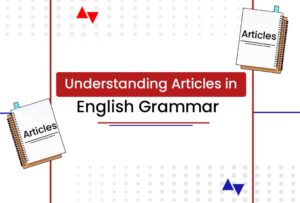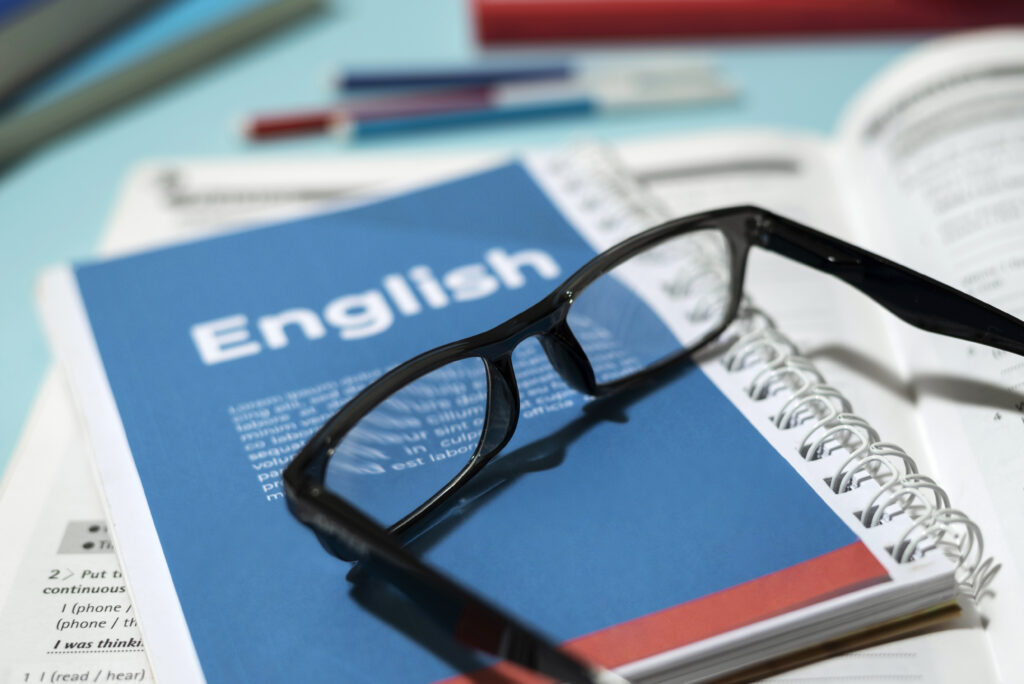Est. reading time: 3 minutes

Imagine a toy shop with many dog-themed toys and only one cat-themed toy. When you refer to the cat-themed toy, you would say ‘the’ cat-themed toy because it is the only one. If you wanted one of the dog-themed toys, you would use ‘a’ dog-themed toy because there are many to choose from. Articles are fundamental aspects of English grammar and are essential for constructing clear and precise sentences. This article will explore the types of articles, their rules, and how to use them correctly.
What is an Article?
An article is a word used before a noun (a person, place, thing, or idea). It helps us determine if we are talking about something specific or something in general. There are three articles in the English Language: ‘a’, ‘an’, and ‘the’.
Example: I saw a dog. (This means any dog, not a specific one.)
She has an apple. (This means any apple, not a specific one.)
I saw a dog. The dog was friendly. (Now we are talking about that specific dog we just mentioned, hence, ‘the’ is used in the second sentence.)
Types of Articles
There are two types of articles in English: definite and indefinite.
Definite Article
The: The definite article ‘the’ is used to refer to a specific noun that is known to the reader or listener. It can be used with both singular and plural nouns.
- Use ‘the’ when referring to something specific or already mentioned.
Example: I saw a dog. The dog was barking.
- Use ‘the’ with superlatives.
Example: She is the best player on the team.
- Use ‘the’ with unique objects or nouns that are one of a kind.
Example: the sun, the moon, and the earth.
- Use ‘the’ with the names of rivers, seas, oceans, and geographical areas.
Examples: the Nile, the Pacific Ocean, and the Sahara Desert.
- Use ‘the’ before ordinal numbers and adjectives like first, second, only, and last.
Example: the first day; the only option; the final chapter.
Indefinite Articles
A: The article ‘a’ is used before a singular noun that begins with a consonant sound. It refers to any member of a group and is used when the specific identity of the noun is not important.
- Use ‘a’ before words starting with a consonant sound.
Example: a cat, a dog, a house.
An: The article ‘an’ is used before a singular noun that begins with a vowel sound. Like ‘a’, it is used when the specific identity of the noun is unknown or unimportant.
- Use ‘an’ before words starting with a vowel sound.
Example: an apple, an elephant, an umbrella.
How to Use Articles Correctly
General Rules
- No Article with General Plural Nouns: Do not use ‘the’ or ‘a/an’ with general plural nouns.
Example: Dogs are friendly animals. - No Article with Proper Nouns: Generally, do not use articles before proper nouns (names of people, countries, etc.)
Example: Elizabeth is coming to the party.
Special Cases
- When the noun is uncountable, do not use ‘a’ or ‘an’:
Example: Information is essential. - Use ‘the’ when the uncountable noun is specific:
Example: The information you provided is useful. - We use the definite article “the” when referring to nations with names that include terms like kingdom, republic, or state.
Example: The Kingdom of Saudi Arabia - “The” is applied to countries whose names are in plural form.
Example: The Bahamas, The Seychelles - For island nations, “the” is used.
Example: The Solomon Islands.
Article Examples in Sentences
- She adopted a cat from the shelter.
- He is reading an interesting book.
- The cake was delicious.
- I need a pen to write this down.
- She gave me an orange.
- The sun rises in the east.
- We visited the Grand Canyon last summer.
- A student asked a question in class.
- I saw an eagle flying over the mountain.
- The children are playing in the park.
Conclusion
Understanding and using articles correctly is crucial for mastering English grammar. Remember, ‘a’ and ‘an’ are used for general, singular nouns, while ‘the’ specifies known or unique nouns. You can enhance clarity when you’re writing and speaking by following the rules outlined in this guide and practising using articles in sentences to solidify your understanding and improve your grammatical accuracy.

